5. Enemies
Series
You are reading Part 5 of the Space Shooter Tutorial.
- Space Shooter, Part 1
- Space Shooter, Part 2
- Space Shooter, Part 3
- Space Shooter, Part 4
- Space Shooter, Part 5
- Space Shooter, Part 6
- Space Shooter, Part 7
- Space Shooter, Part 8
- Space Shooter, Part 9
- Space Shooter, Part 10
- Space Shooter, Part 11
- Space Shooter, Part 12
- Space Shooter, Part 13
Tip
In this chapter, we are going to learn how to add enemies to our game.
Creating enemies
We will add three different types of enemies. Hence, you should follow the same process to add enemies. Click on Add a new object and select Sprite. Then, type "Enemy1" in the name field and select "enemy1.png" from the asset folder as an image. Click apply.
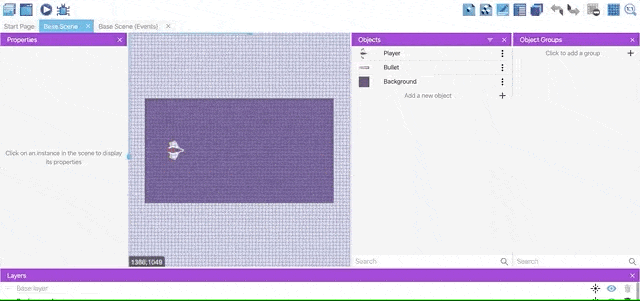
Repeat this step to add all three enemies.
In the end, you should see:
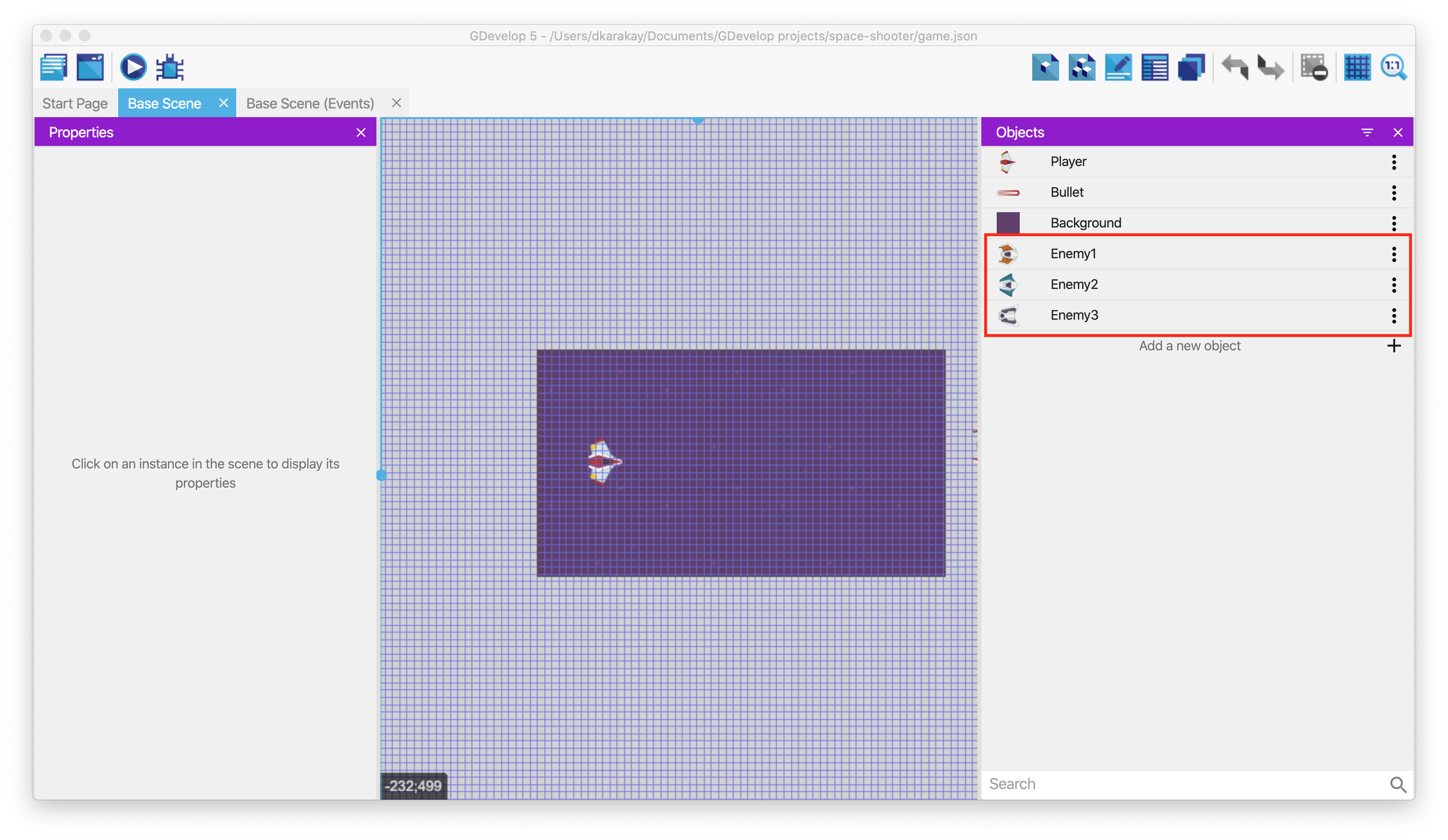
We'll now create an object group called "Enemies". This will be useful in events, to refer to all the objects in the group without repeating events for each object.
Tip
Read this page to learn more about object groups.
Click on the object groups editor button on the upper right. Then, click to add a new group, and add the enemy objects one by one.
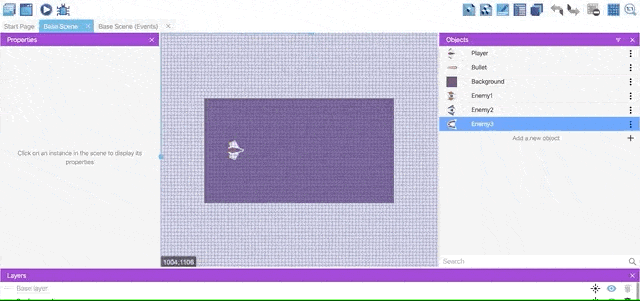
Finally, rename the object group to "Enemies."
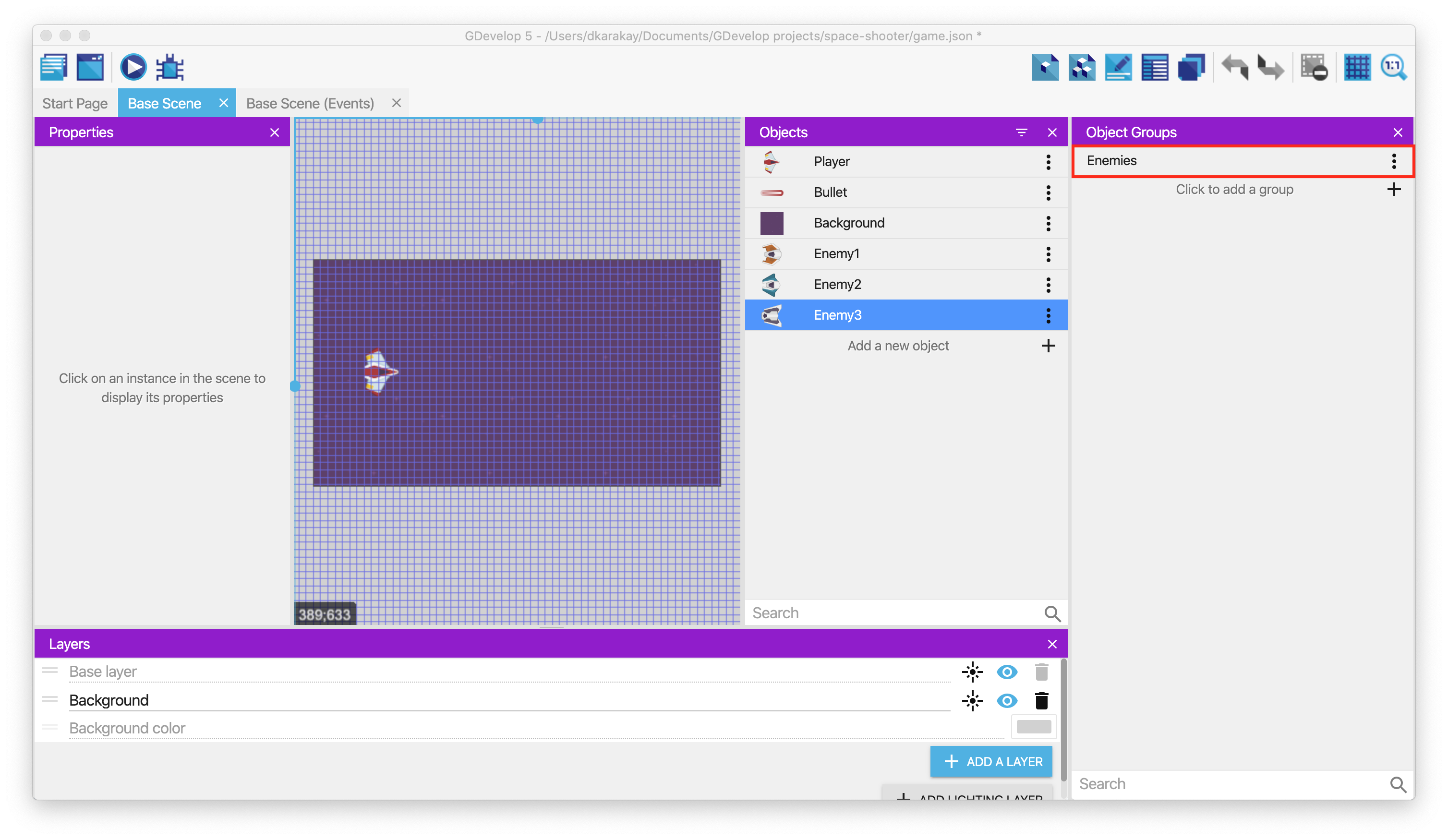
Giving health to enemies
We are using the same health behavior that we used for the player. Edit the Enemy1 object and add the Health behavior.
Warning
Repeat this step for every enemy object.

Then, open the behavior page of Enemy1 and leave it as is: Health: 100, Maximum health: 100
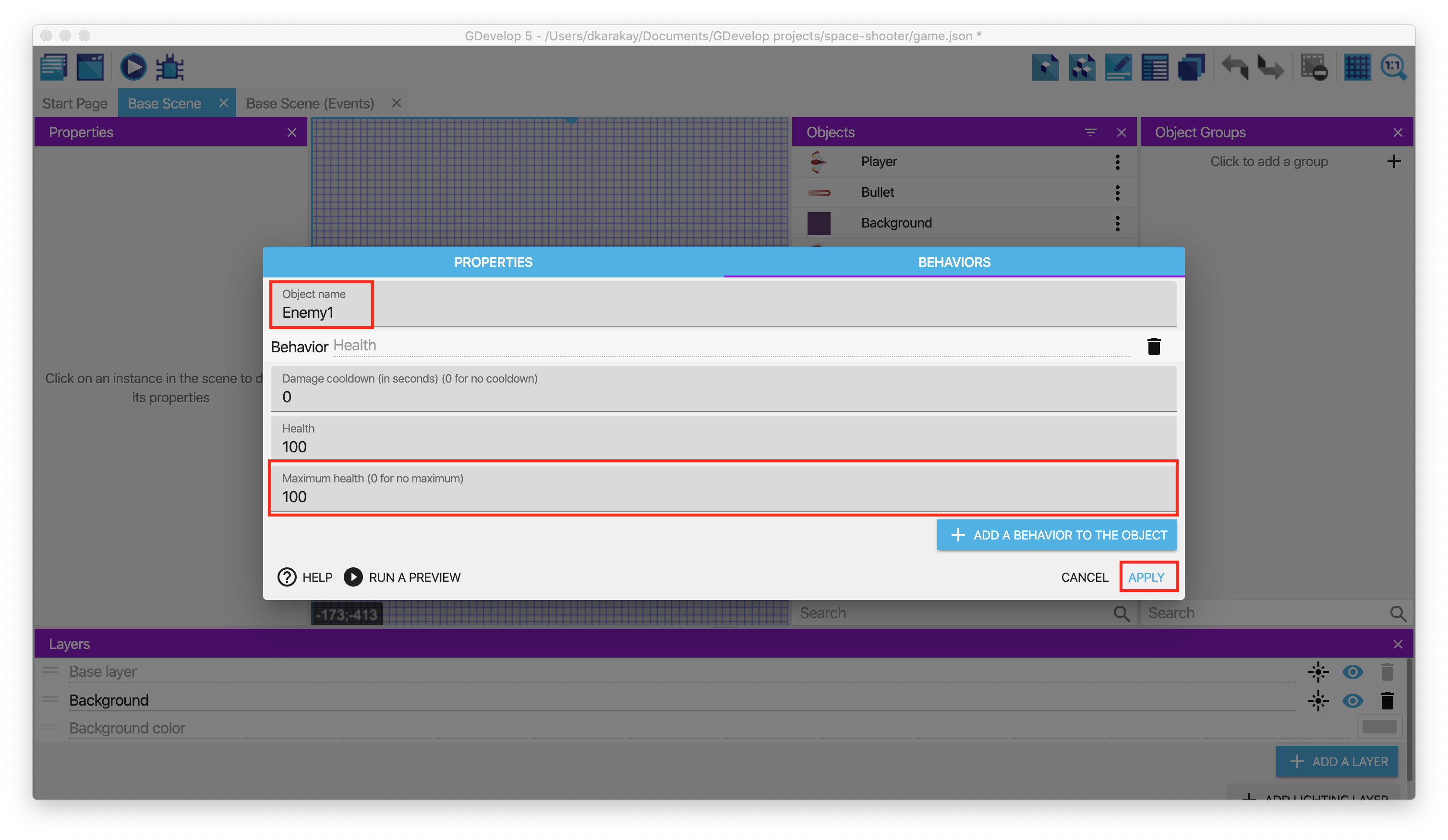
Open the behavior page of Enemy2 and change Health & Maximum Health to 50.
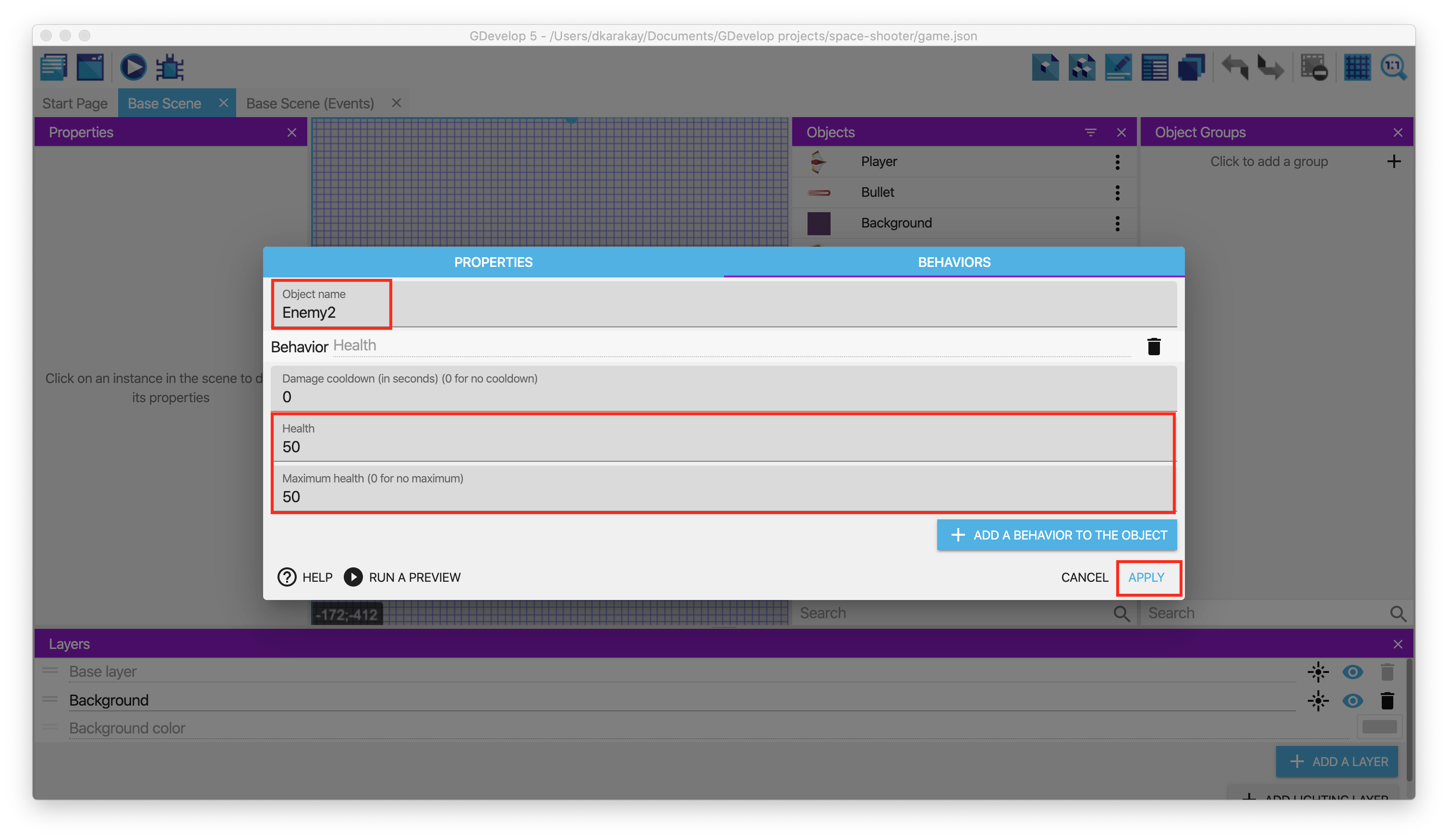
Open the behavior page of Enemy3 and change Health & Maximum Health to 150.
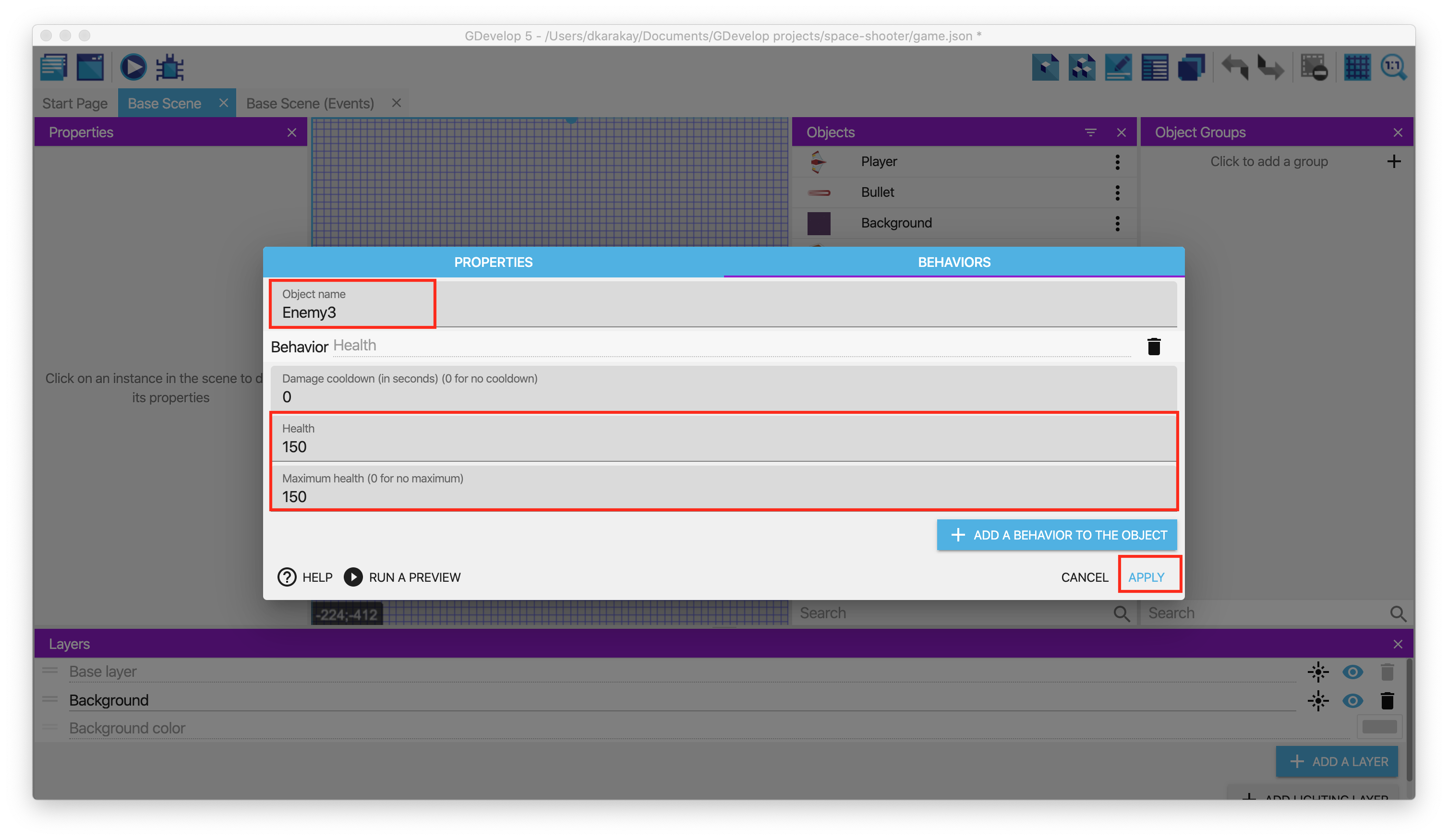
Shooting enemies
We will add a few actions to shoot the enemies. Firstly, open the Events tab. Then, add a new condition, choose the Enemies object group that we created before. Select action as Collision and the object as Bullet; by doing that, we can track the collision between our bullet objects and the enemies.
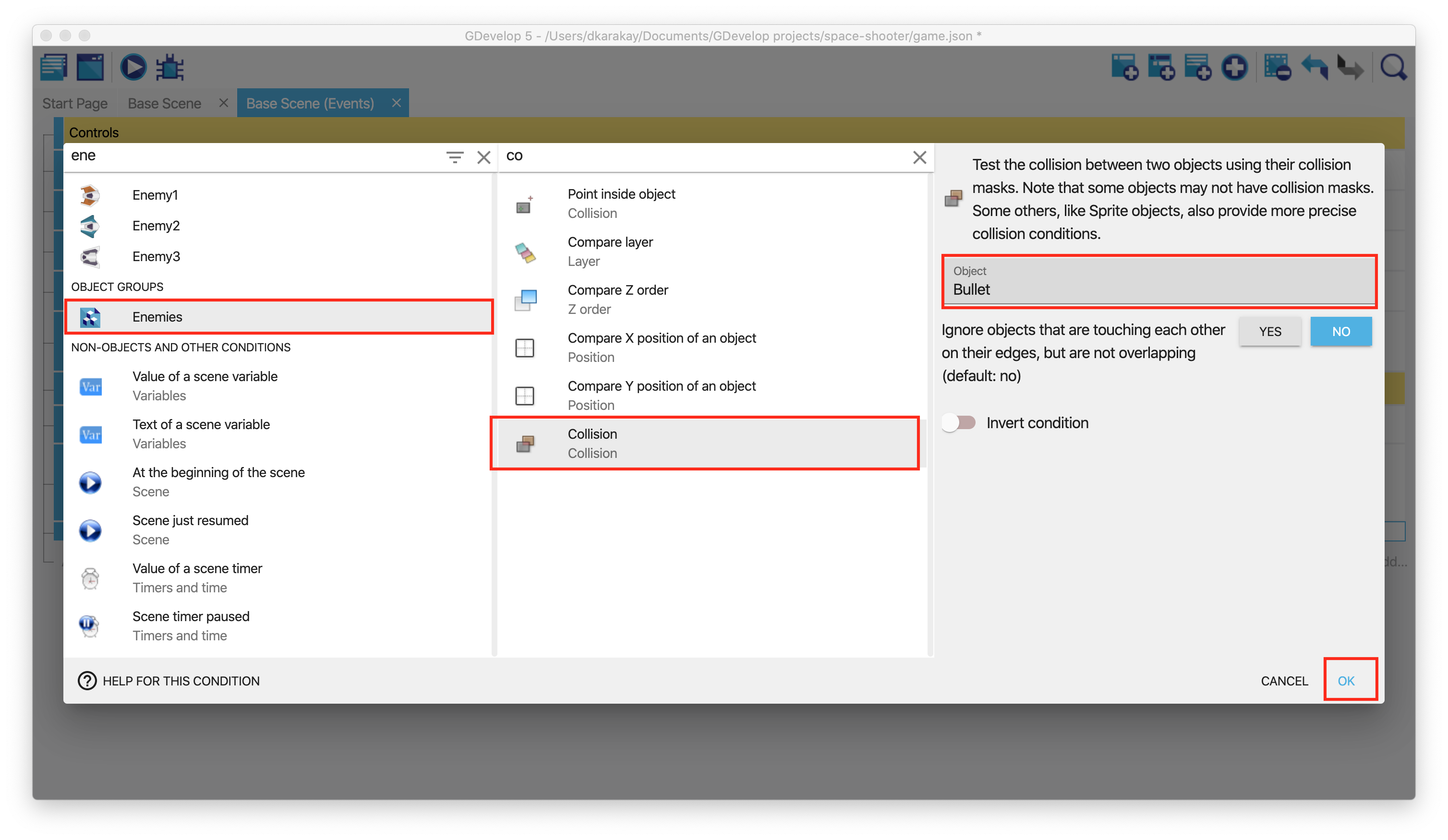
If the collision happens between bullets and enemies, we need to remove the Bullet objects. Hence, we will add a new action next to the previous condition. Pick Bullet object and select Delete an object.
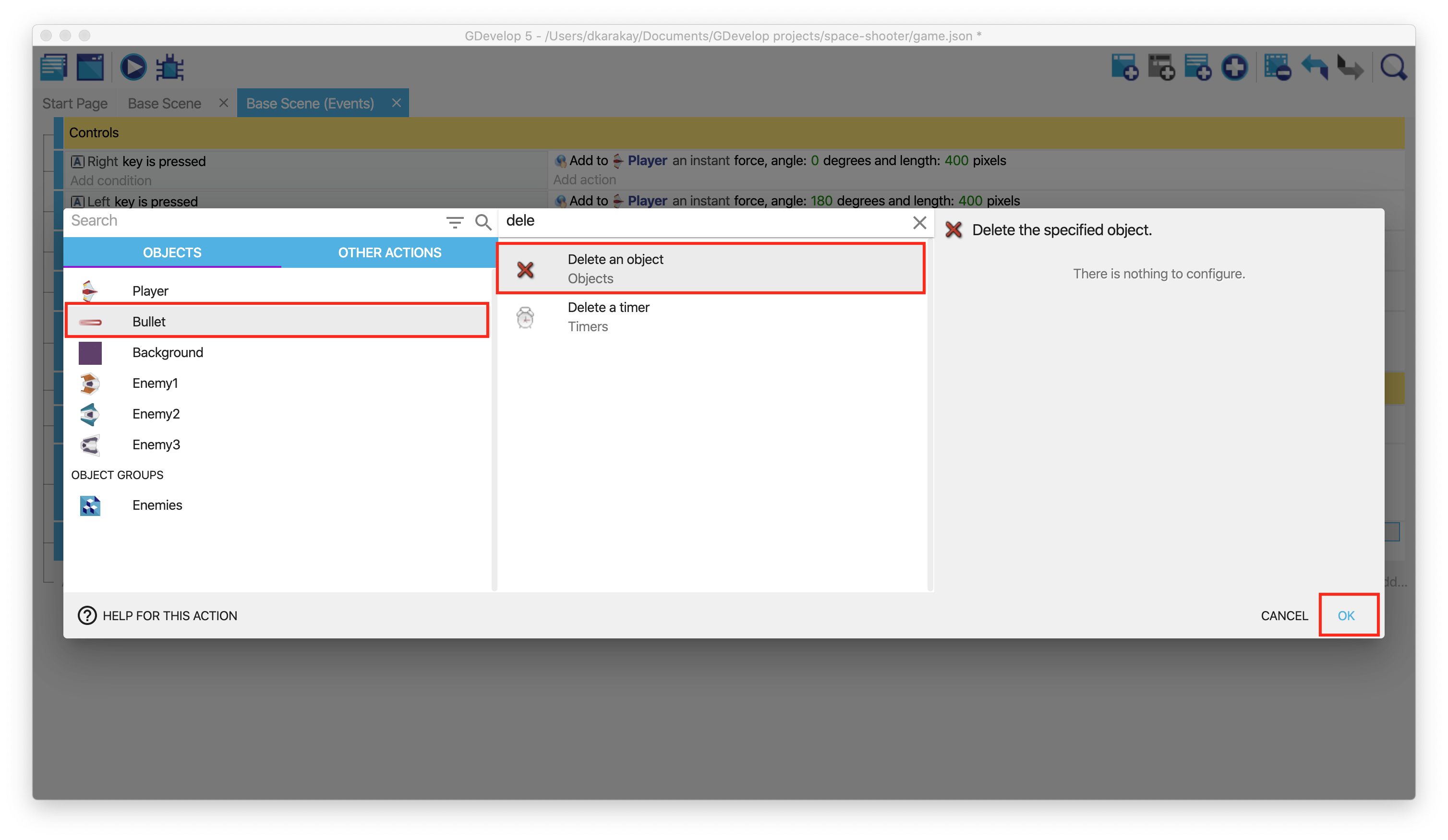
Now, we need to give damage to the Enemies. Choose Enemies and select Damage the object. Then, enter 50 for the value of the damage.
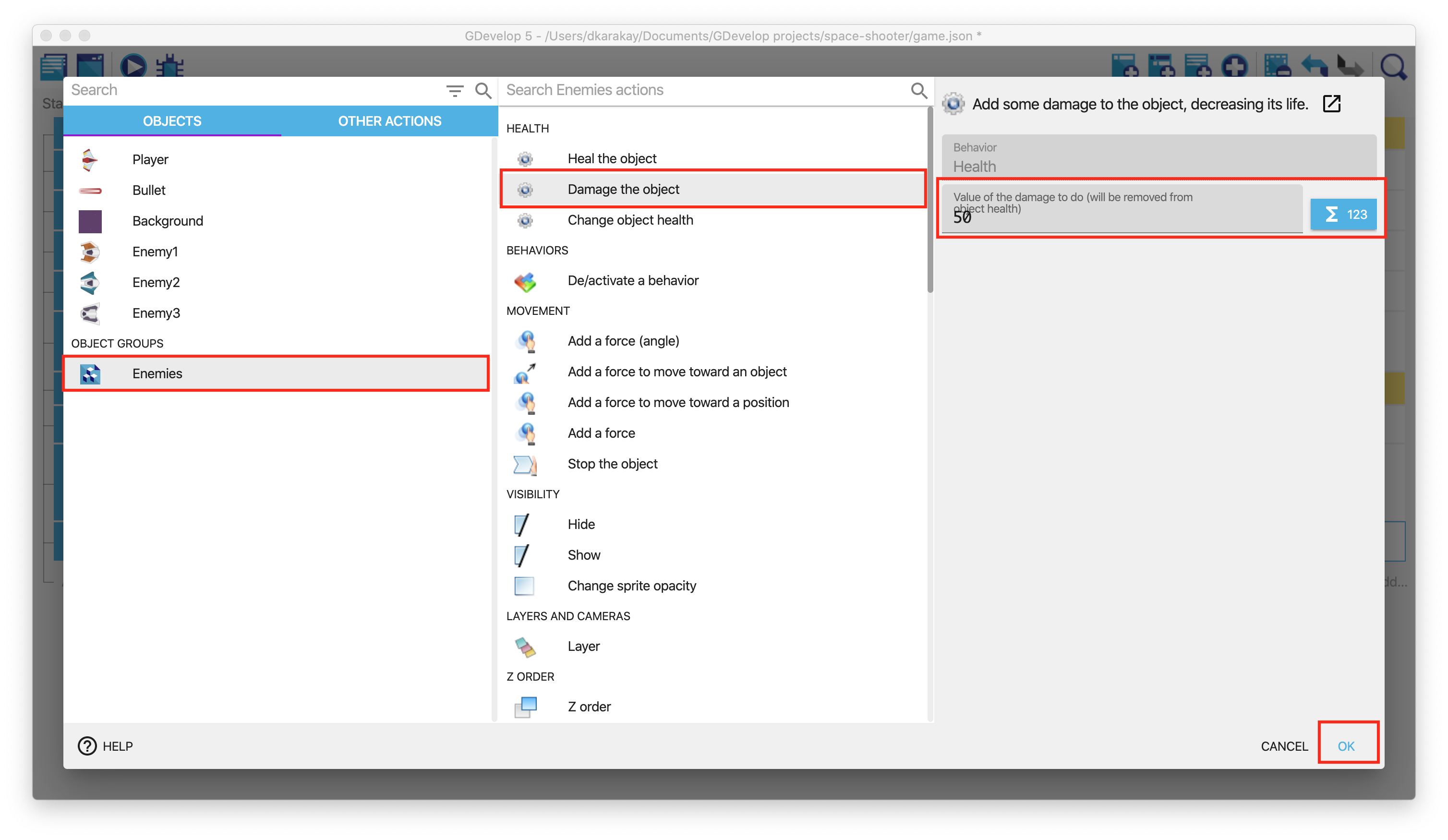
You should see these actions:

Then, we need to add an extra condition to determine whether the enemy is dead or not. We will add a new event under the last one. Select Enemies as objects and choose Is dead. Now we can track if the health of the enemy is dead or not.
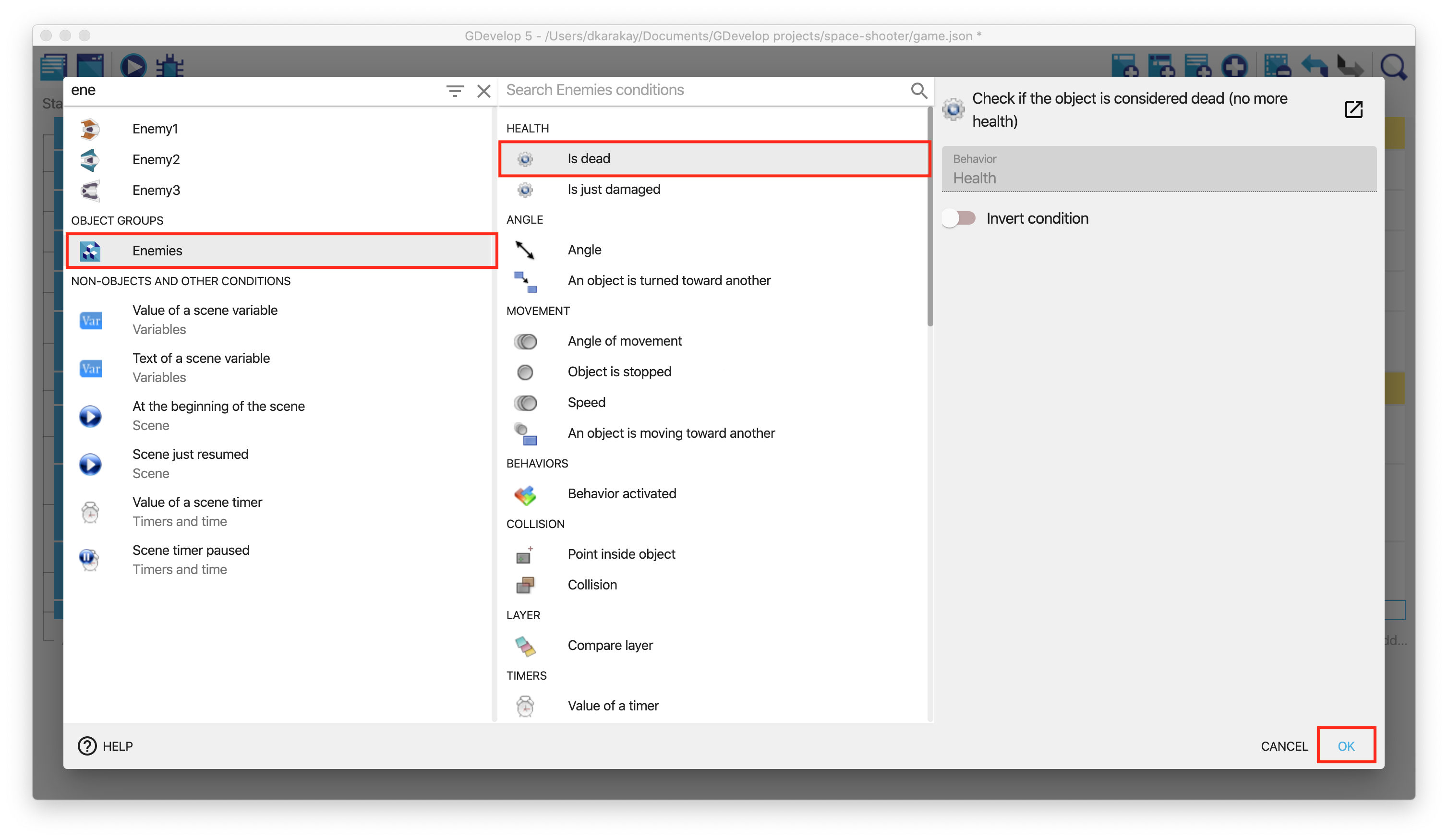
If the enemy is dead, we should delete the scene's object. We will add a new action to delete the object, just like in the previous steps.
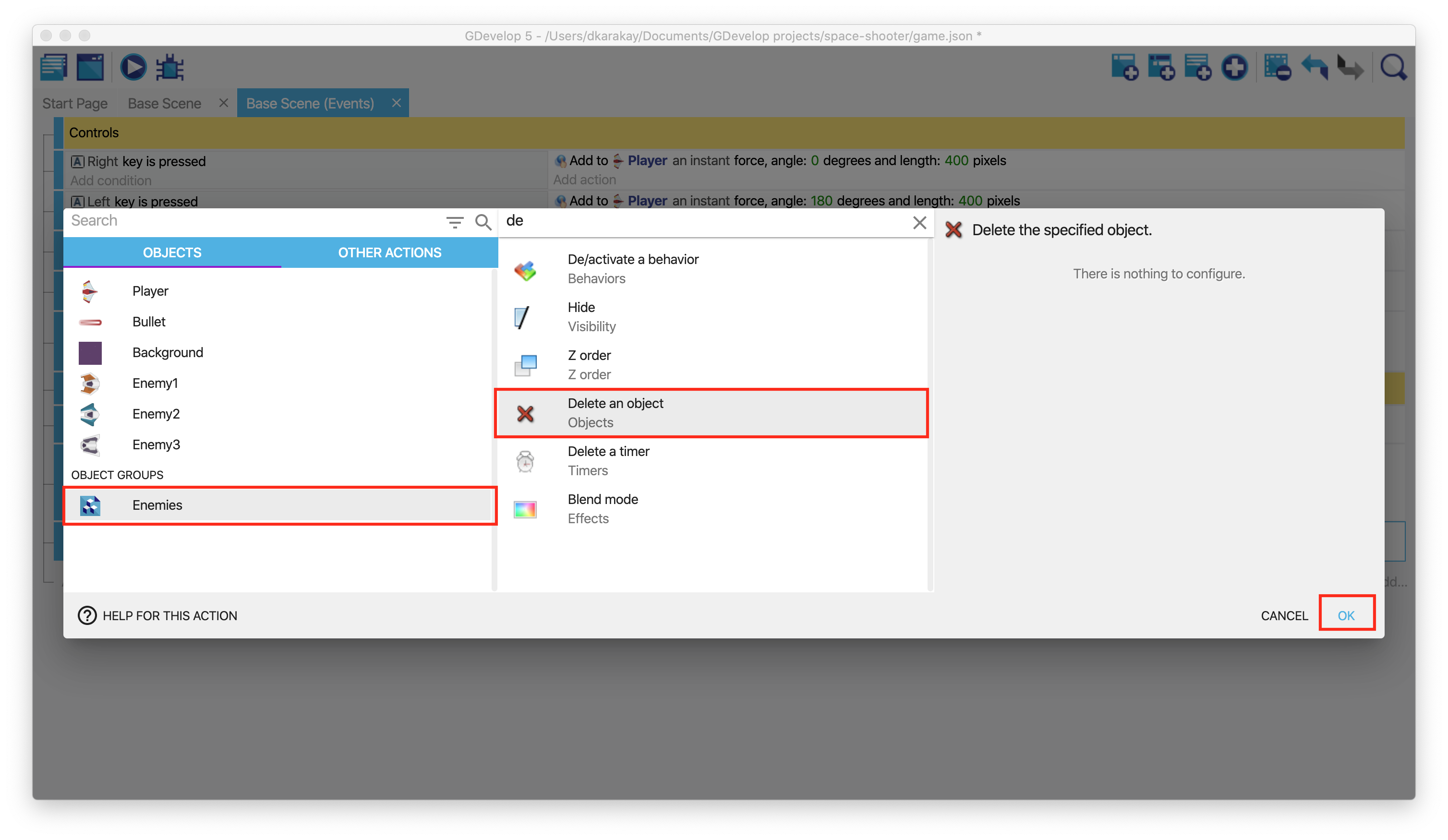
Finally, we need to give a force to move enemies. However, we should provide a force when they are on the camera. Hence, we will add a new condition to perform our idea. In this condition, we are looking at the Enemies' X position when it is less than the center Camera X position + 450. Make sure that less or equal to is selected in the sign of the test.
Warning
You can ask why we are using 450 because it is half of the screen width. Remember, our width is set to 900. If you use any other resolution, you need to change it.
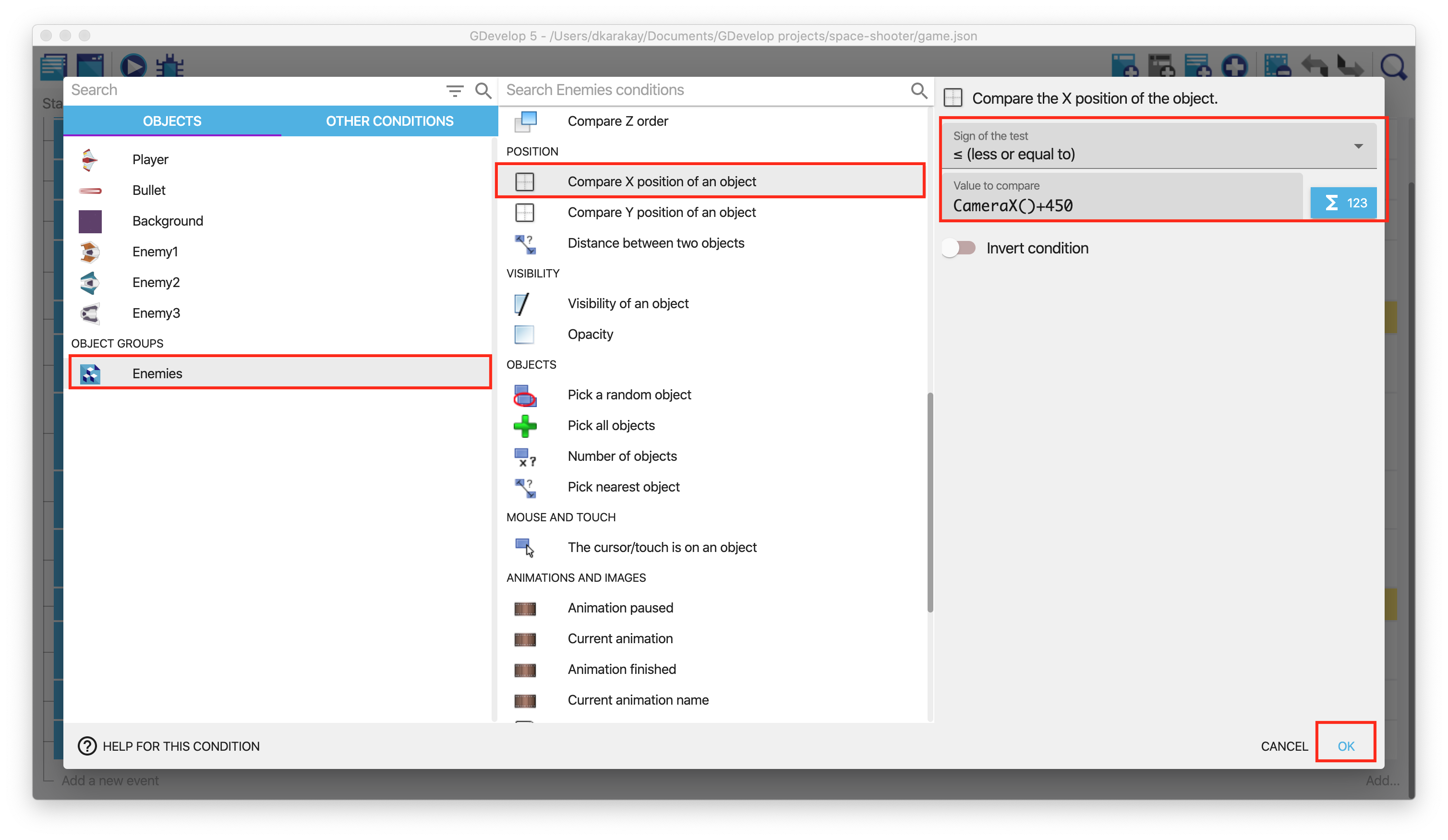
In the event's action, we will give a force to the Enemies as we did in the previous steps. Ensure that the angle is 180, the speed is 200 pixels per second, and the Instant option is checked.
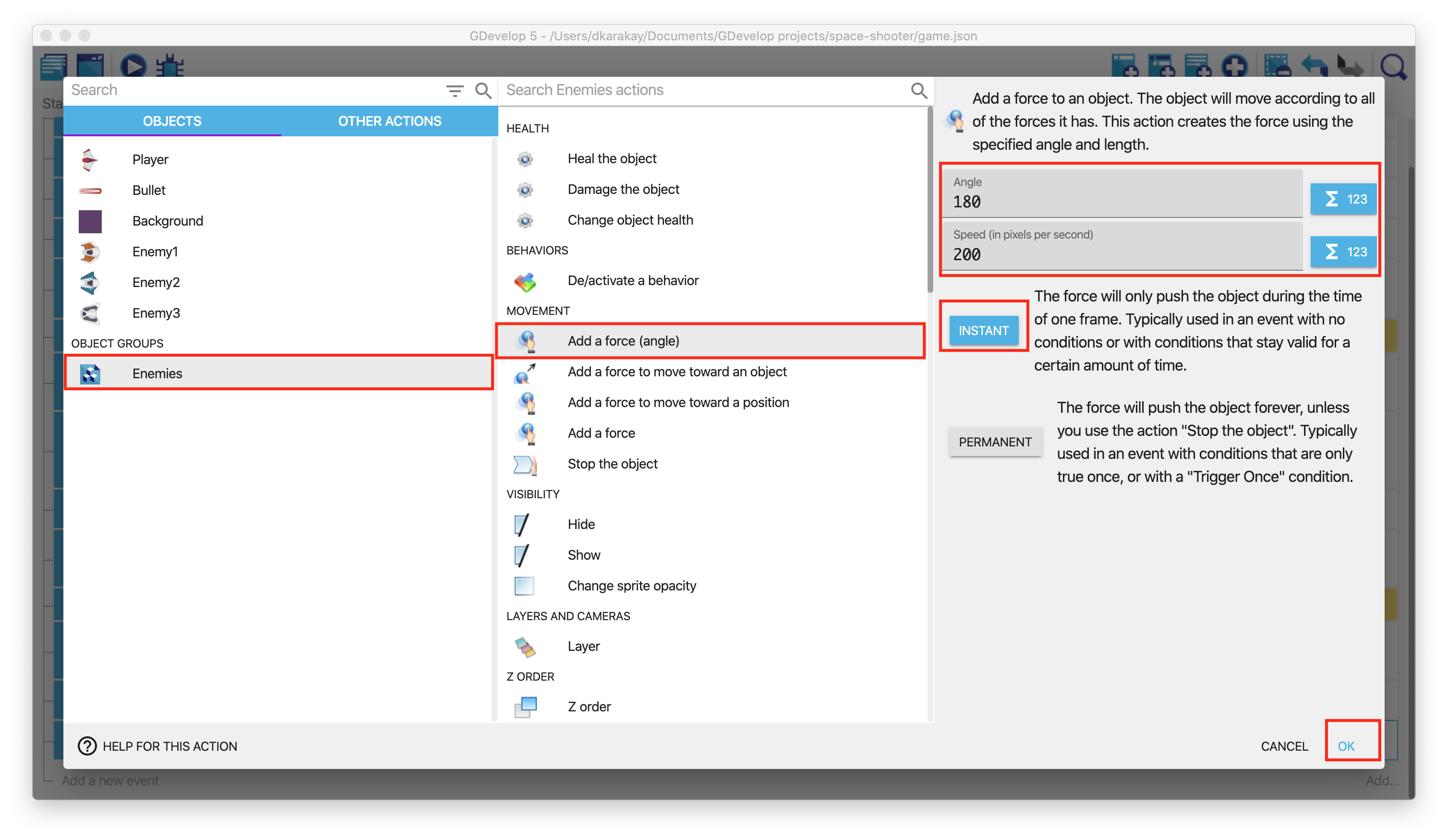
Now all the events are ready for shooting Enemies. You can add a comment on the top to classify these actions.

Damaging the player
We will start adding a new condition to determine the collision between the player and the enemies. Follow the same procedure in the above.
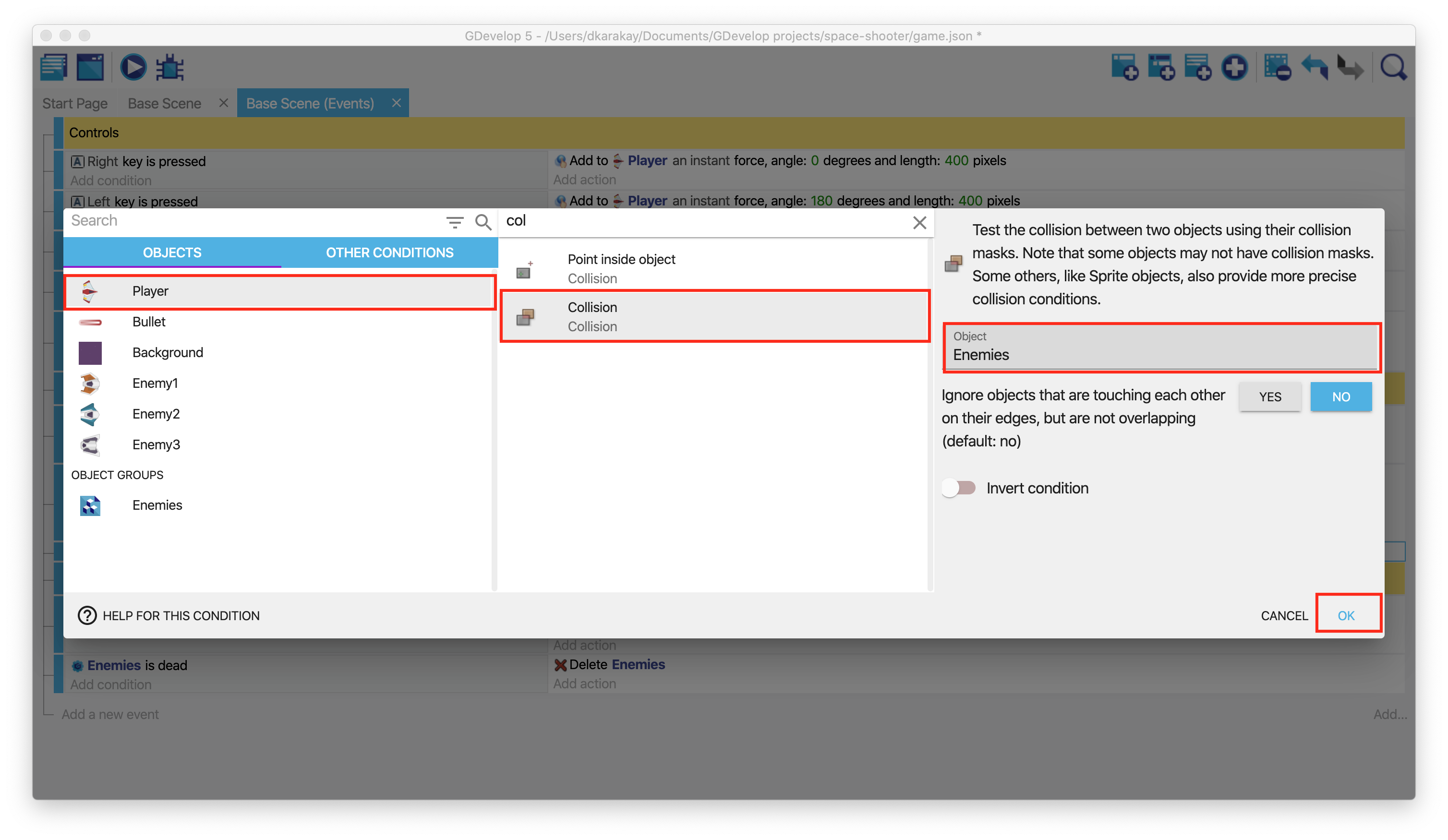
This time, we do not directly give the player damage because there will be different scenarios to damage the player. Hence, we are going to use the Scene variable.
Tip
Scene variables are useful because they are created at the beginning of the scene, and they are going to be destroyed when the scene is over.
Now, create an action and type "variable" on the search bar. Then, select Value of a scene variable and click on the button next to the action details. In this window, create a scene variable called "IsDamaged" and give its initial value 0. Then click apply.

Then, select the IsDamaged as the variable, and change the scene variable's value to 40.

Add the delete action for the enemies like in the above. Then, your actions look like in the image below.

Add a new condition to check whether IsDamaged is greater than or equal to 1. If the condition is fulfilled, then we will give damage to the player.
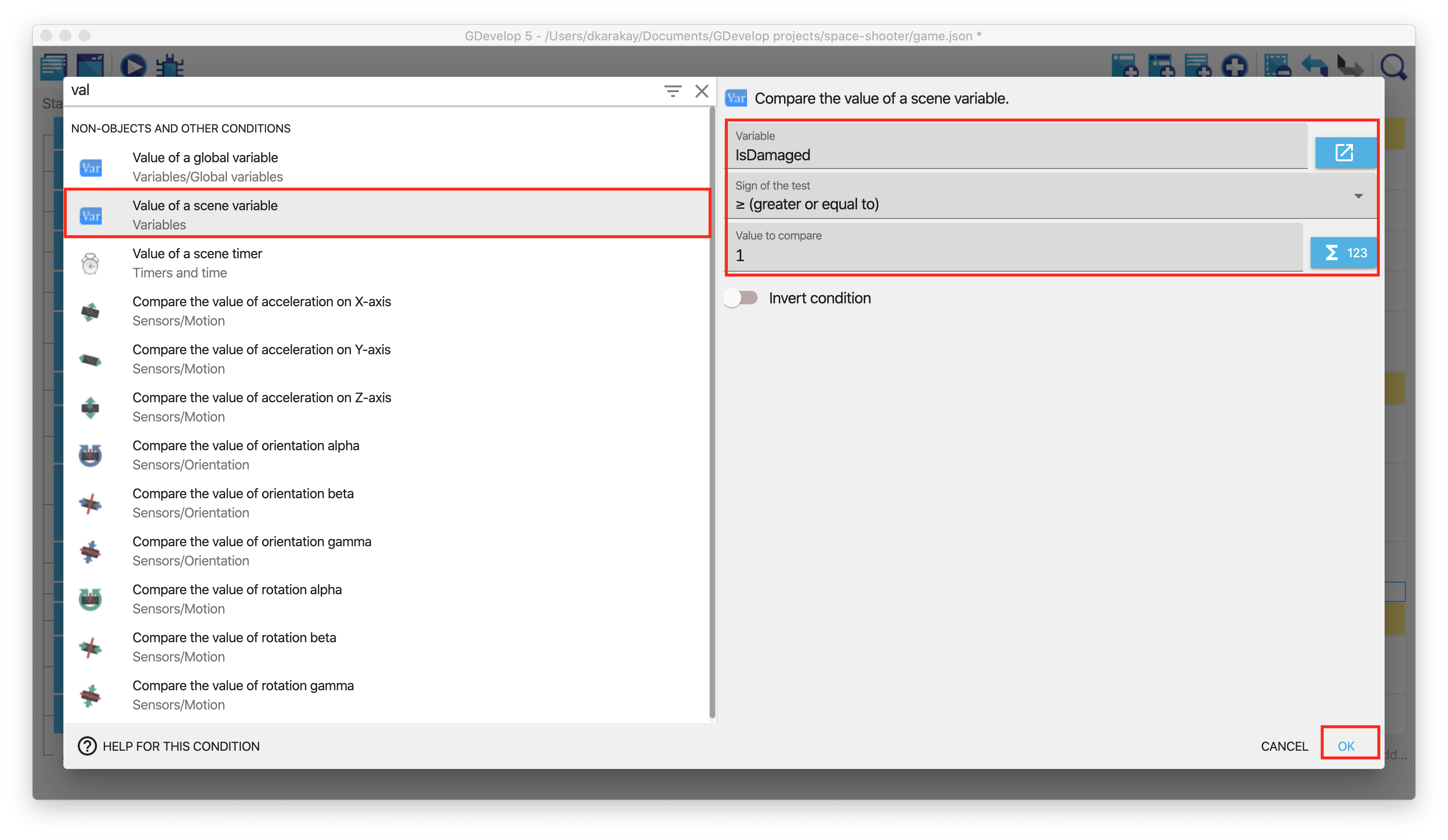
Then, add a new action to damage the player. We did the same above, but this time enter the value of "IsDamaged."
Tip
To enter the value of a variable, click the number icon next to the entered area. Afterward, choose Variables and the Value of scene variable. There will be a new window where you can select our variables.

We also need to reset the IsDamaged to 0 because this will prevent our player from getting extra damages. Add a new action under the previous one and set IsDamaged to 0.
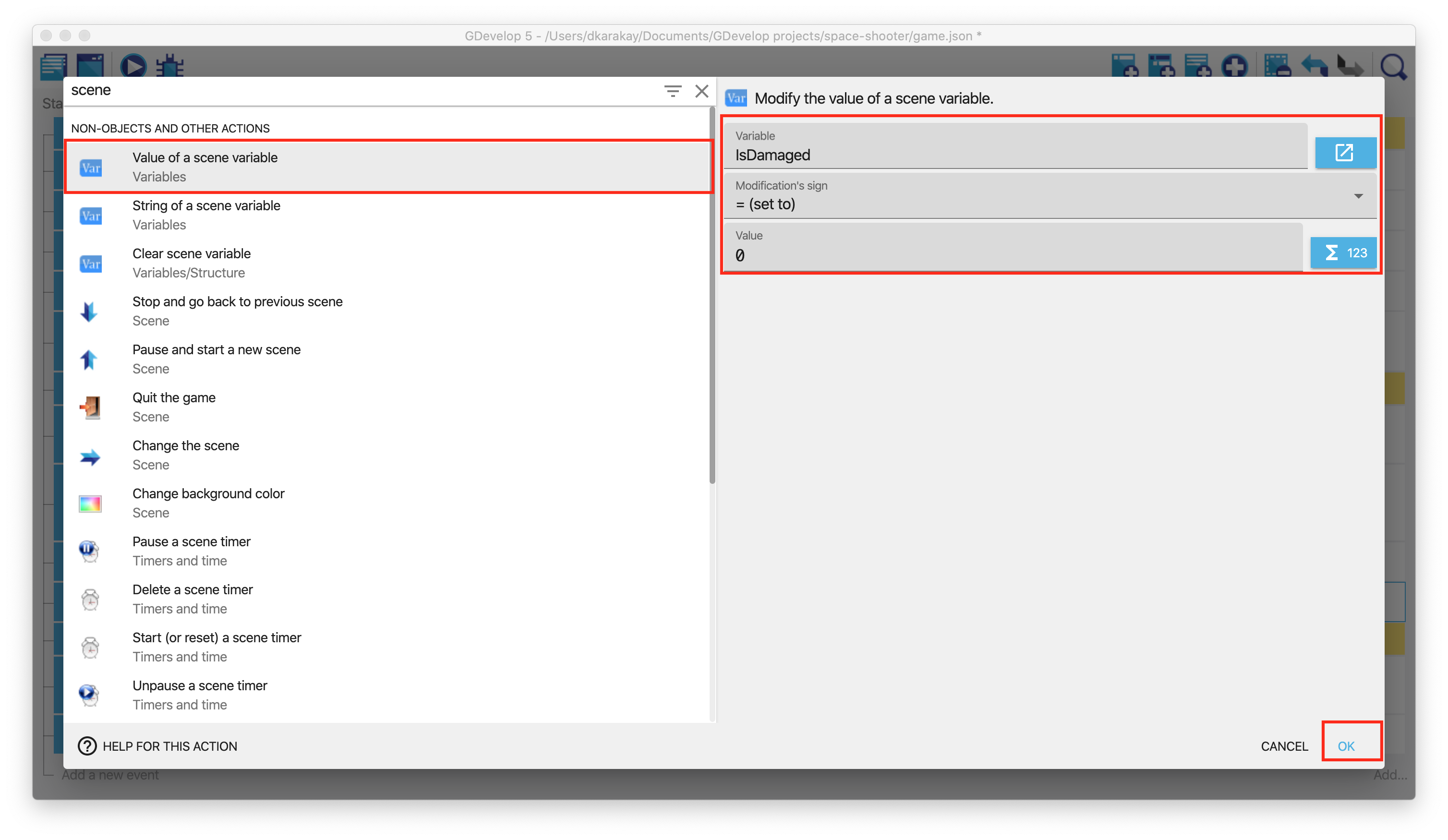
Restarting the game
Our game is over when the player is dead. Add a new condition to check the player is dead or not. Then, add an action to restart the game. Type "scene" on the search bar and select Change the scene. Just select the "Base Scene" or your scene's name.
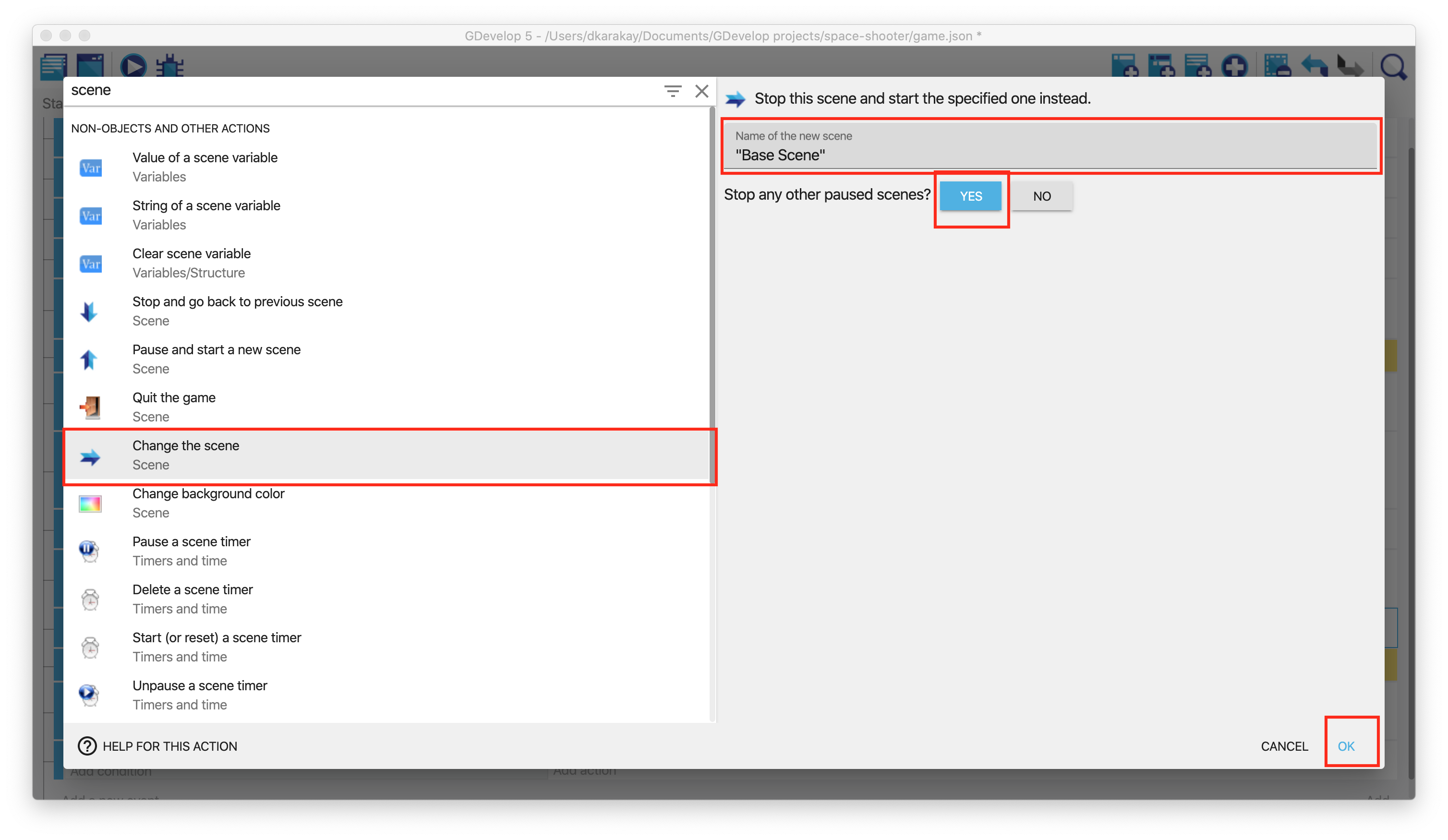
For this chapter, the player's actions are ready.

Small enemies
We already made the player smaller, but we did not make it for the enemies. Please copy and paste the same action for making it small and change the Player with Enemies.
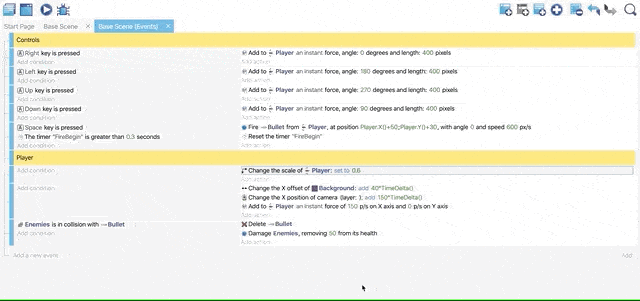
This should be the final version of the events.
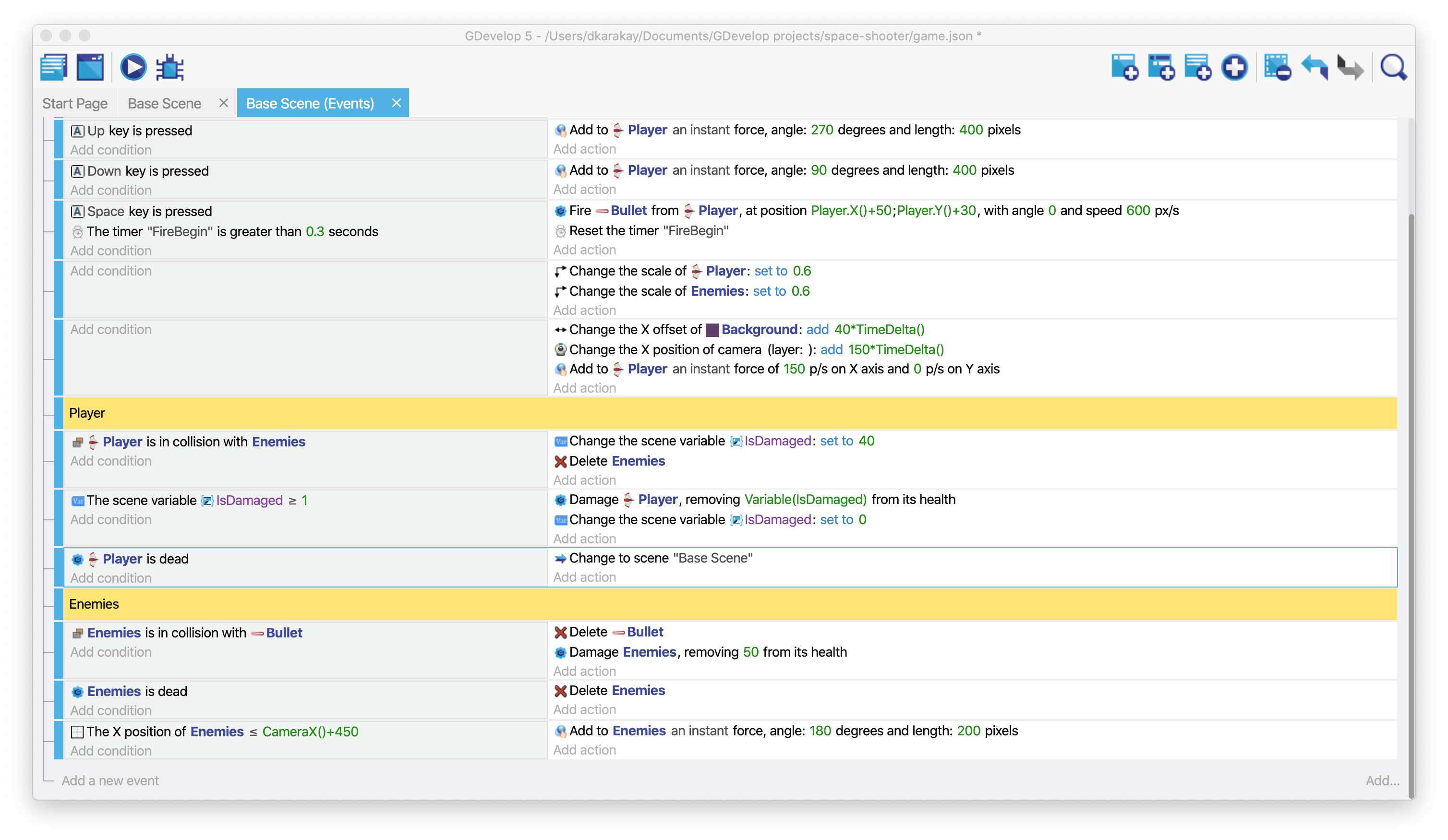
Testing out new mechanics
Before testing out new mechanics, we need to put some enemies on the scene. Drag some enemies and drop them at different places where horizontally the same level as the scene.
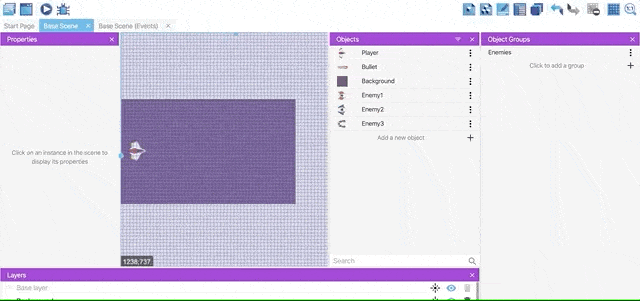
Now, we are ready to play our game. We can shoot the enemies, and the player can get damage due to the enemy's collision.
